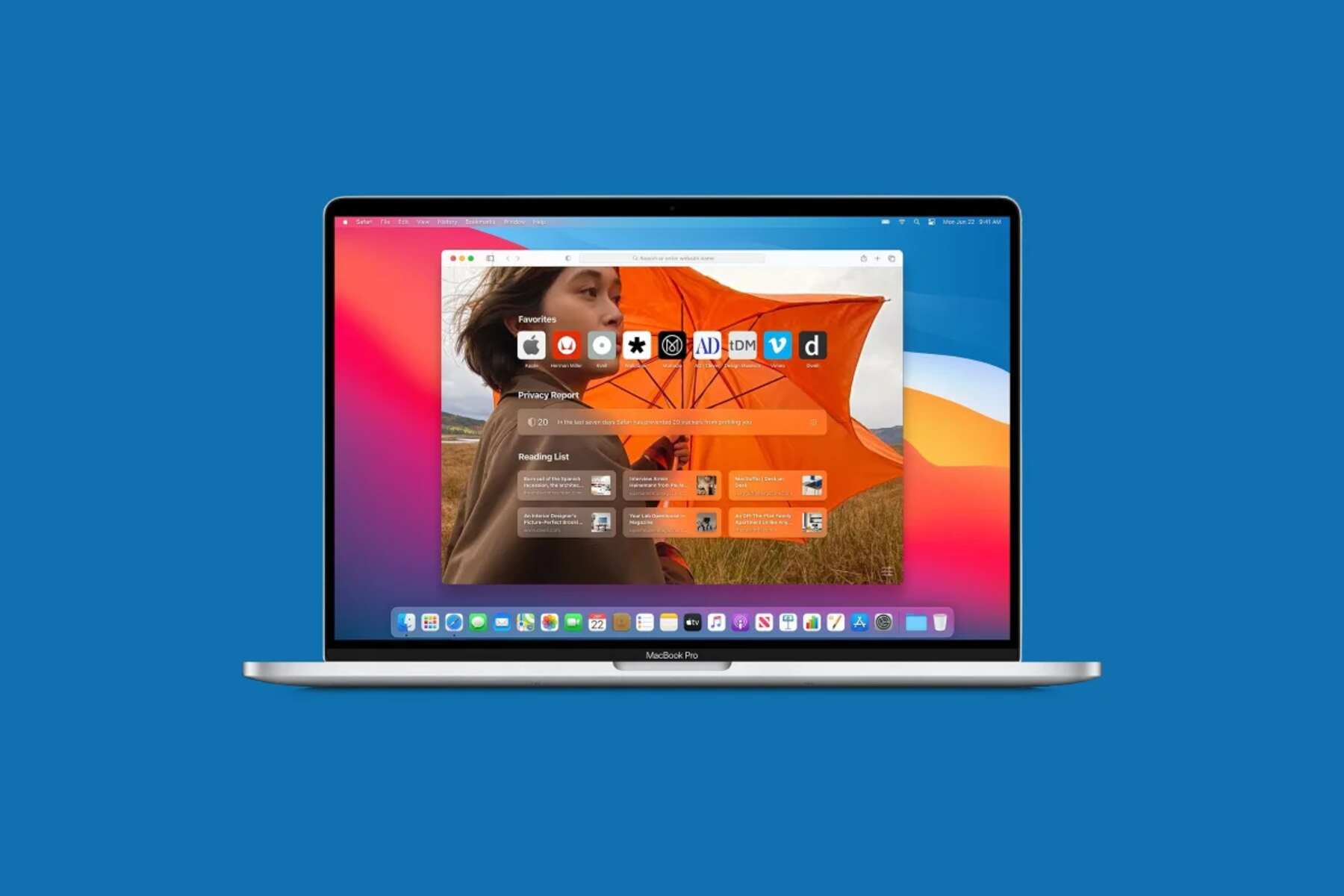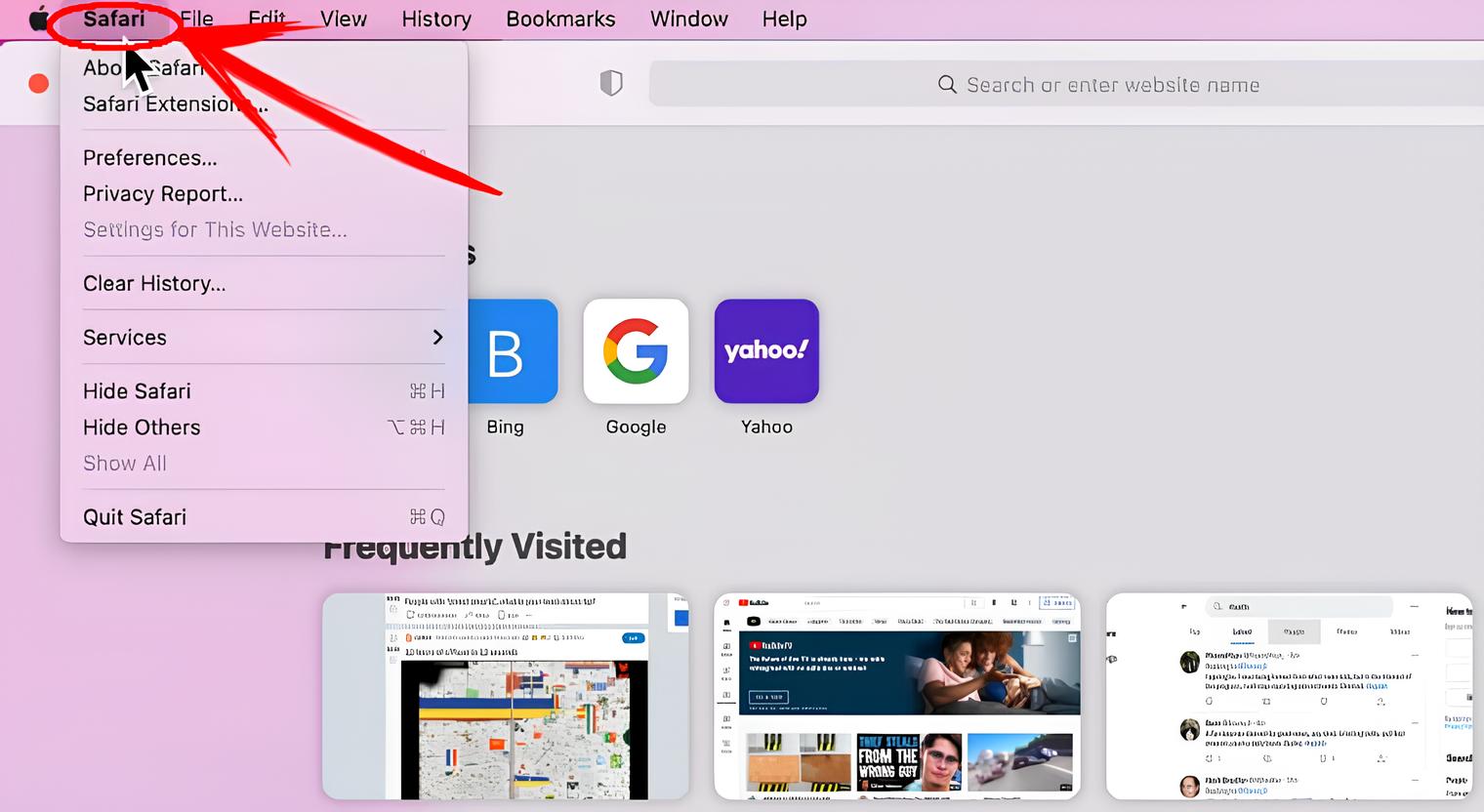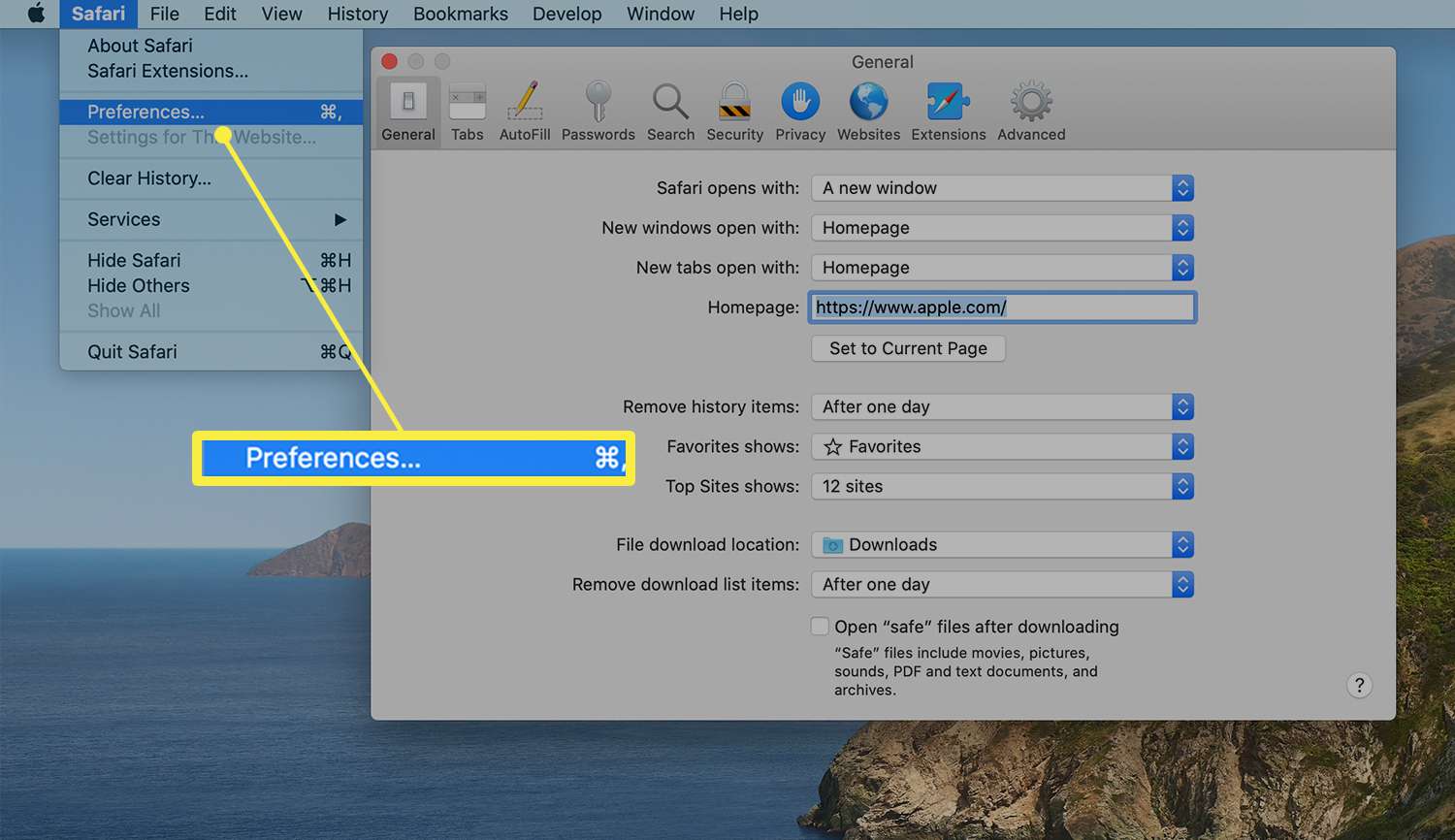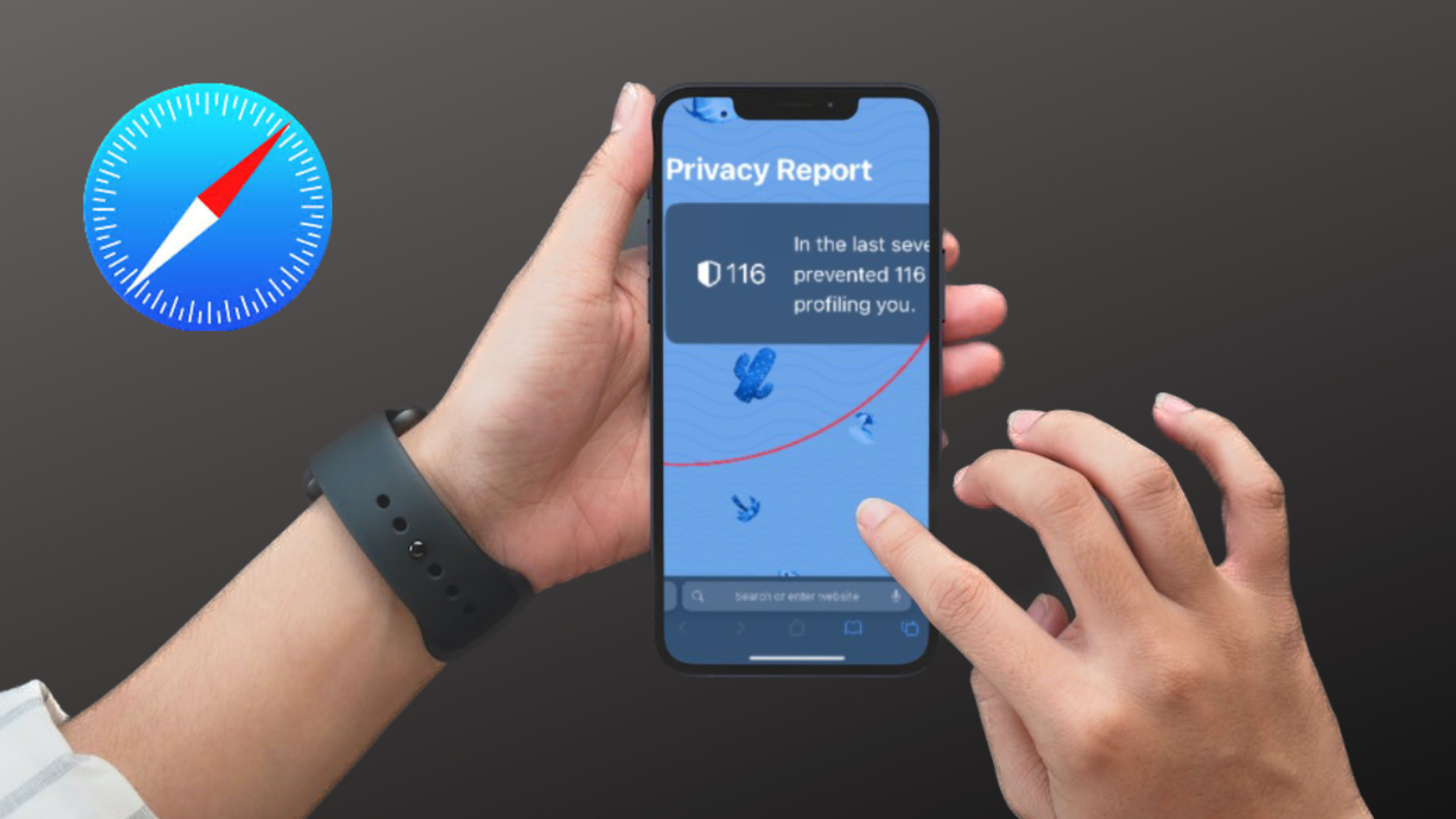Introduction
In today's digital age, web browsing has become an integral part of our daily lives. Whether we're shopping online, reading the news, or connecting with friends on social media, our web activities leave behind a trail of data that is often used for targeted advertising and user tracking. This practice, known as cross-site tracking, has raised concerns about user privacy and data security.
As a response to these concerns, web browsers have implemented various measures to protect users from cross-site tracking. One such browser, Safari, has introduced a feature called "Prevent Cross-Site Tracking" to enhance user privacy and security. This feature aims to limit the ability of advertisers and other entities to track users across different websites, thereby reducing the collection of personal data without consent.
Understanding the mechanisms behind cross-site tracking and the ways in which Safari addresses this issue is crucial for users who prioritize their online privacy. By delving into the intricacies of cross-site tracking and Safari's preventive measures, users can make informed decisions about their online browsing habits and take proactive steps to safeguard their personal information.
In this article, we will explore the concept of cross-site tracking, delve into the specific methods employed by Safari to prevent it, and discuss the impact of enabling this feature on the overall browsing experience. By gaining a deeper understanding of these topics, readers will be empowered to make informed choices about their online privacy and security while using Safari as their preferred web browser.
Understanding Cross-Site Tracking
Cross-site tracking, also known as third-party tracking, refers to the practice of monitoring a user's online behavior across multiple websites. This tracking is often facilitated by third-party entities, such as advertising networks and data analytics companies, which embed tracking technologies, such as cookies and scripts, into websites. These technologies enable these entities to collect and aggregate user data, including browsing history, preferences, and interactions, to create detailed user profiles.
The primary goal of cross-site tracking is to gather insights into user behavior and interests, allowing advertisers to deliver targeted ads based on the user's online activities. For example, if a user visits an online clothing store and later browses a news website, they may encounter ads for the same or similar clothing items they previously viewed. This personalized advertising is made possible by cross-site tracking, which enables advertisers to follow users across different websites and tailor their ad experiences accordingly.
While targeted advertising can be beneficial for businesses and users seeking relevant products or services, cross-site tracking raises significant privacy concerns. Users may feel that their online activities are being monitored without their consent, leading to a sense of intrusion and loss of control over their personal data. Furthermore, the accumulation of extensive user profiles across various websites can potentially expose sensitive information, posing risks to user privacy and security.
In response to these concerns, web browsers have implemented features to mitigate cross-site tracking. Safari, in particular, has taken proactive steps to limit the impact of third-party tracking on user privacy. By understanding the underlying mechanisms of cross-site tracking, users can make informed decisions about their online privacy and take advantage of the protective measures offered by Safari to enhance their browsing experience.
By shedding light on the intricacies of cross-site tracking, users can gain a deeper appreciation for the importance of privacy protection while navigating the digital landscape. This understanding empowers users to make conscious choices about their online activities and the tools they utilize to safeguard their personal information.
How Safari Prevents Cross-Site Tracking
Safari employs several strategies to prevent cross-site tracking and enhance user privacy. These measures are designed to limit the ability of third-party entities to track users across different websites, thereby reducing the collection of personal data without explicit user consent.
Intelligent Tracking Prevention (ITP)
Safari's Intelligent Tracking Prevention (ITP) is a key feature that targets cross-site tracking mechanisms. ITP uses machine learning algorithms to identify and block tracking techniques employed by third-party entities. By analyzing user interactions with websites and the storage of tracking data, ITP aims to restrict the effectiveness of cross-site tracking methods, such as persistent cookies and other tracking technologies.
Cross-Site Tracking Prevention
Safari's Cross-Site Tracking Prevention feature specifically focuses on limiting the cross-site tracking capabilities of third-party entities. By isolating the storage of website data and restricting the access of third-party domains to this data, Safari reduces the ability of advertisers and other entities to create comprehensive user profiles across multiple websites. This proactive approach disrupts the seamless tracking of user activities, thereby enhancing user privacy.
Enhanced Tracking Protection
Safari incorporates Enhanced Tracking Protection to bolster its defenses against cross-site tracking. This feature blocks known trackers and prevents them from monitoring user behavior across different websites. By proactively identifying and neutralizing tracking elements, such as scripts and cookies, Safari provides users with a more secure browsing environment, reducing the risk of unauthorized data collection and profiling by third-party entities.
Privacy Report
Safari's Privacy Report feature empowers users with insights into the tracking activities that are being blocked while browsing. By providing a comprehensive overview of the trackers that have been prevented from profiling user behavior, the Privacy Report enhances transparency and allows users to understand the impact of Safari's preventive measures. This visibility into tracking attempts reinforces user confidence in Safari's commitment to protecting their privacy.
By implementing these robust preventive measures, Safari demonstrates its dedication to safeguarding user privacy and mitigating the impact of cross-site tracking. These features collectively contribute to a more secure and privacy-conscious browsing experience, empowering users to navigate the web with confidence and peace of mind.
The proactive stance taken by Safari in preventing cross-site tracking underscores the browser's commitment to prioritizing user privacy and data security. By leveraging these built-in protective measures, users can enjoy a more privacy-respecting online experience while benefiting from the seamless functionality of Safari as their preferred web browser.
Enabling Prevent Cross-Site Tracking in Safari
Enabling the "Prevent Cross-Site Tracking" feature in Safari is a straightforward process that empowers users to take control of their online privacy and enhance their browsing security. By activating this feature, users can proactively limit the ability of third-party entities to track their activities across different websites, thereby reducing the collection of personal data without explicit consent.
To enable "Prevent Cross-Site Tracking" in Safari, users can follow these simple steps:
-
Open Safari Preferences: Begin by launching the Safari browser and accessing the "Preferences" from the Safari menu located in the top-left corner of the screen.
-
Navigate to Privacy Settings: Within the Preferences window, select the "Privacy" tab to access the privacy settings and options available in Safari.
-
Enable Prevent Cross-Site Tracking: In the Privacy tab, users will find the option to "Prevent cross-site tracking." Simply check the box next to this option to activate the feature.
Once "Prevent Cross-Site Tracking" is enabled, Safari will implement its preventive measures to limit the impact of cross-site tracking, bolstering user privacy and security during web browsing sessions. By isolating the storage of website data and restricting the access of third-party domains to this data, Safari disrupts the seamless tracking of user activities, thereby enhancing user privacy.
In addition to enabling "Prevent Cross-Site Tracking," users can also take advantage of Safari's other privacy features, such as Intelligent Tracking Prevention (ITP) and Enhanced Tracking Protection, to further fortify their browsing experience against intrusive tracking techniques.
By empowering users to enable "Prevent Cross-Site Tracking" and providing transparent insights into the tracking activities that are being blocked, Safari reinforces its commitment to prioritizing user privacy. This proactive approach aligns with Safari's dedication to offering a privacy-respecting browsing environment while maintaining the seamless functionality and user-friendly experience that users have come to expect from the Safari browser.
By taking control of their online privacy through the activation of "Prevent Cross-Site Tracking" and leveraging Safari's comprehensive privacy features, users can navigate the web with confidence, knowing that their personal data is being safeguarded and their privacy respected.
This simple yet impactful action empowers users to actively participate in shaping their online privacy and security, aligning with the evolving landscape of digital privacy concerns and the increasing demand for user-centric privacy protection measures.
Impact of Prevent Cross-Site Tracking on User Experience
Enabling the "Prevent Cross-Site Tracking" feature in Safari can significantly impact the overall user experience, particularly in terms of privacy, security, and browsing behavior. By actively mitigating the effects of cross-site tracking, Safari empowers users to navigate the web with enhanced confidence and control over their online interactions.
Enhanced Privacy and Security
The foremost impact of enabling "Prevent Cross-Site Tracking" is the bolstering of user privacy and security. With this feature activated, Safari diligently restricts the ability of third-party entities to monitor and track user activities across different websites. This proactive stance shields users from intrusive data collection and the creation of extensive user profiles without their explicit consent. As a result, users can engage in online activities with a heightened sense of privacy, knowing that their browsing behavior is not being extensively monitored and utilized for targeted advertising or profiling purposes.
Reduced Targeted Advertising
By limiting cross-site tracking, Safari's "Prevent Cross-Site Tracking" feature contributes to a reduction in targeted advertising based on users' browsing history and preferences. Users may notice a decrease in the frequency of personalized ads that follow them across various websites, resulting in a less intrusive and more organic browsing experience. This reduction in targeted advertising aligns with users' preferences for a less obtrusive online ad experience, allowing them to focus on content and interactions without feeling inundated by personalized marketing efforts.
User Empowerment and Control
Enabling "Prevent Cross-Site Tracking" empowers users to take an active role in shaping their online privacy and security. By making a conscious choice to limit cross-site tracking, users assert their control over the dissemination of their personal data and the extent to which their online activities are monitored by third-party entities. This sense of empowerment fosters a more positive and user-centric browsing experience, as users feel more in command of their digital interactions and the protection of their sensitive information.
Seamless Browsing Experience
Despite the enhanced privacy and security measures, enabling "Prevent Cross-Site Tracking" in Safari does not compromise the seamless functionality and user-friendly nature of the browsing experience. Users can continue to enjoy the full range of Safari's features and capabilities while benefiting from the protective measures that limit cross-site tracking. This balance between privacy protection and uninterrupted browsing ensures that users can navigate the web with ease and efficiency, without encountering unnecessary disruptions or limitations.
In essence, the impact of enabling "Prevent Cross-Site Tracking" on user experience is multifaceted, encompassing enhanced privacy, reduced targeted advertising, user empowerment, and a seamless browsing environment. By embracing this feature, users can cultivate a more privacy-respecting and secure online experience while leveraging Safari's comprehensive protective measures to navigate the digital landscape with confidence and peace of mind.
Conclusion
In conclusion, Safari's implementation of the "Prevent Cross-Site Tracking" feature represents a significant step towards prioritizing user privacy and security in the digital realm. By understanding the intricacies of cross-site tracking and the proactive measures employed by Safari to mitigate its impact, users can make informed decisions about their online browsing habits and take control of their personal data.
Enabling "Prevent Cross-Site Tracking" in Safari empowers users to actively participate in shaping their online privacy and security. The feature's impact extends beyond mere data protection, influencing the overall browsing experience by fostering a sense of empowerment, reducing targeted advertising, and maintaining a seamless user-centric environment.
Safari's commitment to privacy is further exemplified through features such as Intelligent Tracking Prevention (ITP), Enhanced Tracking Protection, and the provision of a Privacy Report, which collectively contribute to a more secure and transparent browsing experience. These measures align with the evolving landscape of digital privacy concerns and the increasing demand for user-centric privacy protection measures.
As users continue to navigate the web for various purposes, ranging from personal research to online transactions, the assurance of privacy and security becomes paramount. Safari's dedication to safeguarding user data and limiting intrusive tracking techniques underscores its commitment to providing a privacy-respecting browsing environment without compromising the seamless functionality and user-friendly experience that users have come to expect.
By embracing the "Prevent Cross-Site Tracking" feature and leveraging Safari's comprehensive protective measures, users can navigate the digital landscape with confidence, knowing that their personal data is being safeguarded and their privacy respected. This proactive approach aligns with the evolving landscape of digital privacy concerns and the increasing demand for user-centric privacy protection measures.
Ultimately, the integration of privacy-enhancing features in Safari reflects a broader industry shift towards prioritizing user privacy and data security. As users become more discerning about their online privacy, the availability of tools such as "Prevent Cross-Site Tracking" empowers them to take control of their digital footprint and engage in online activities with confidence and peace of mind.





















